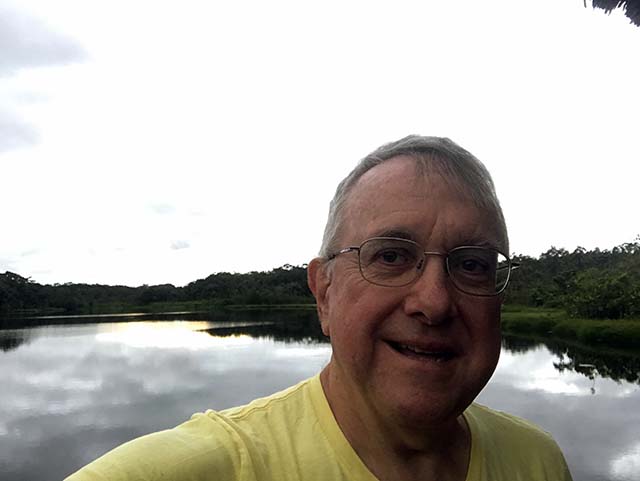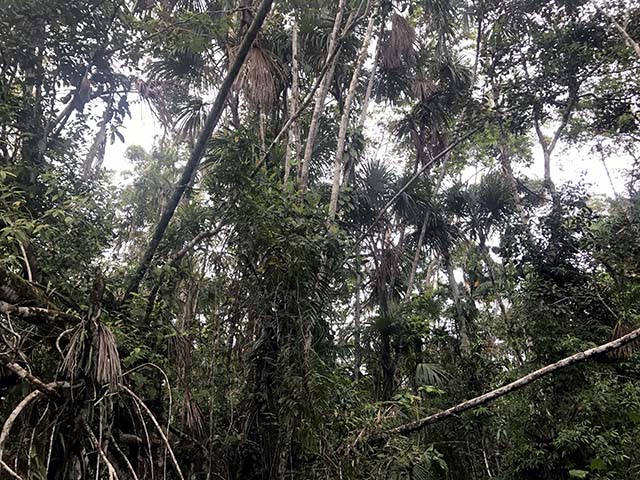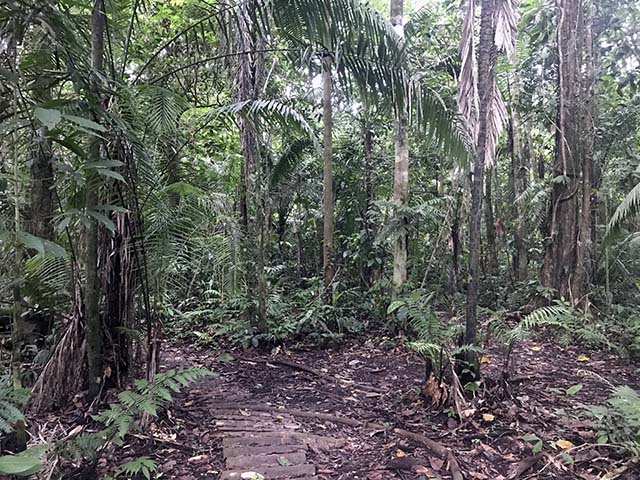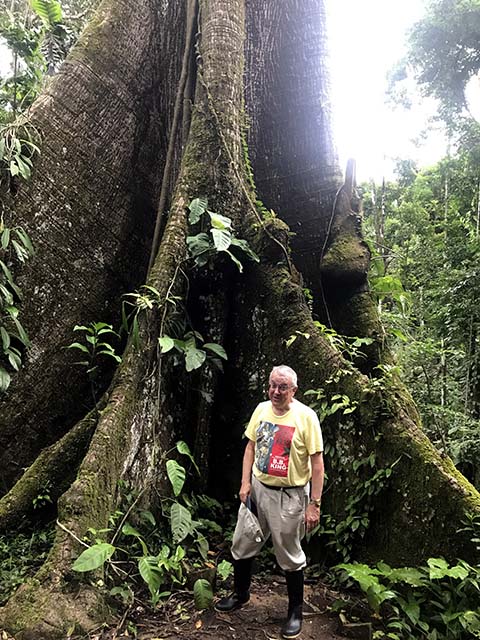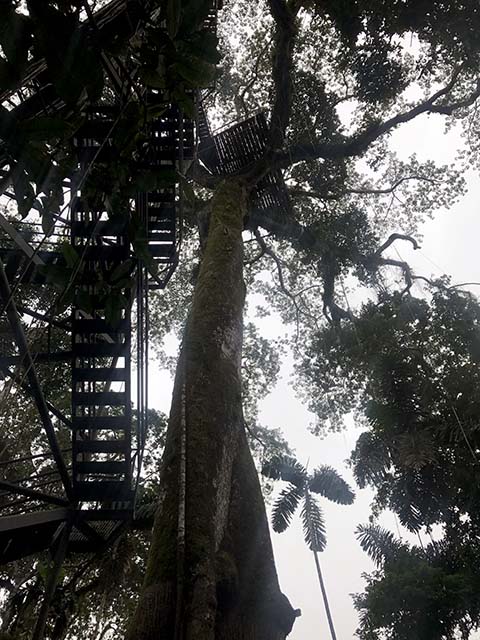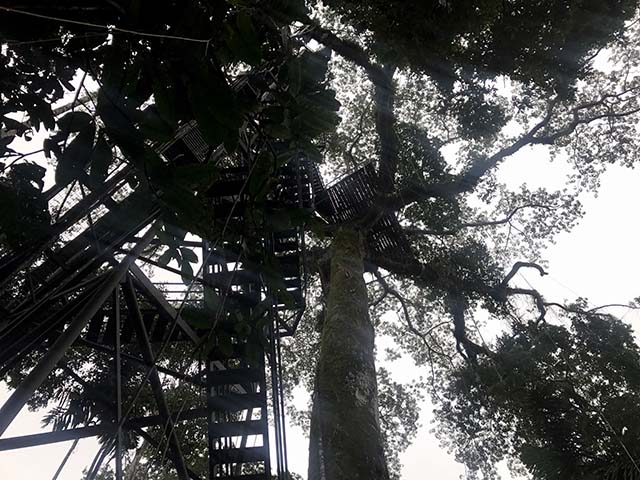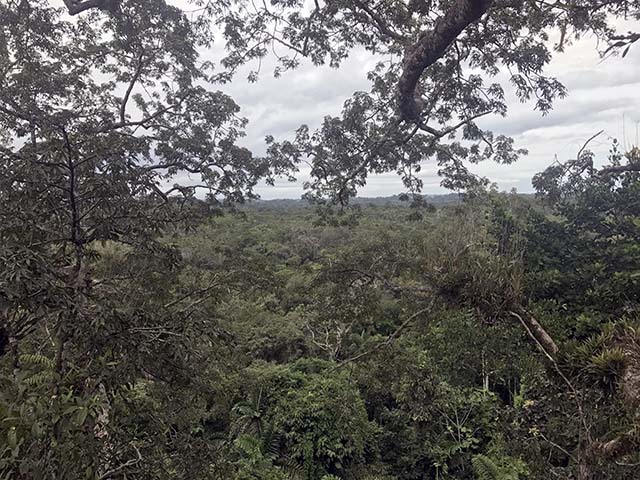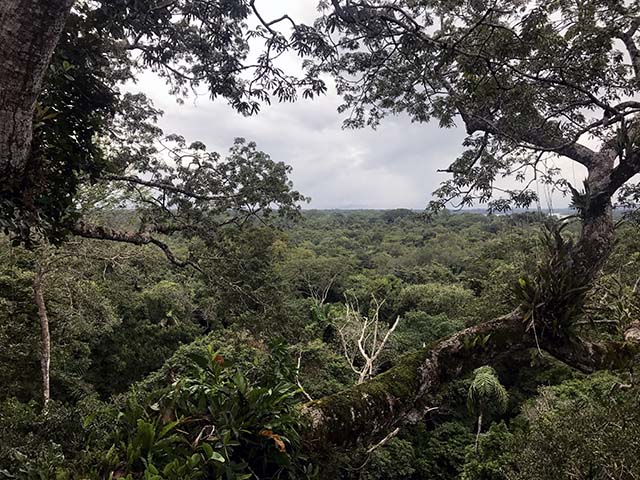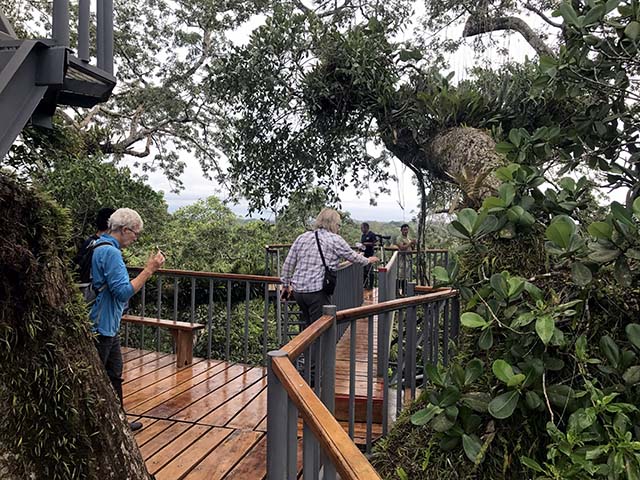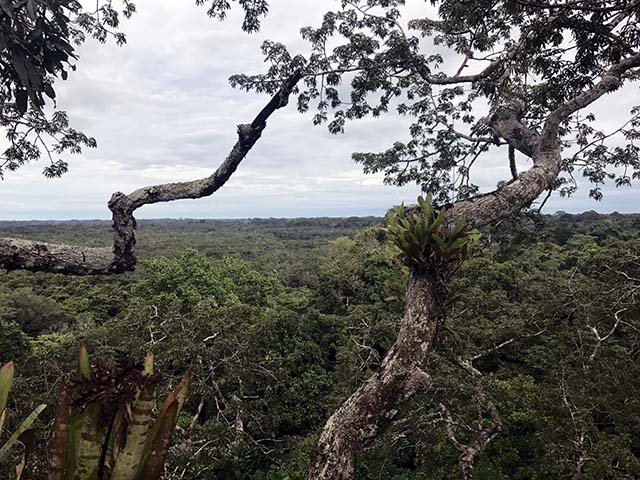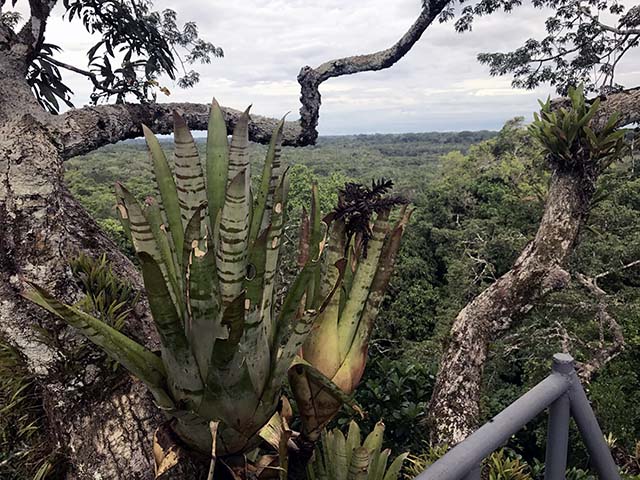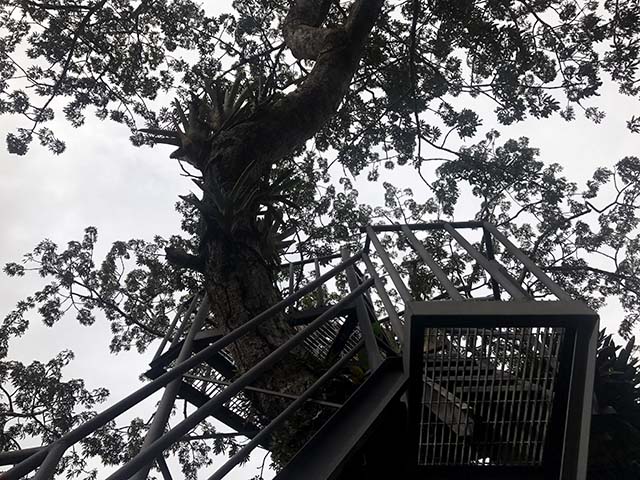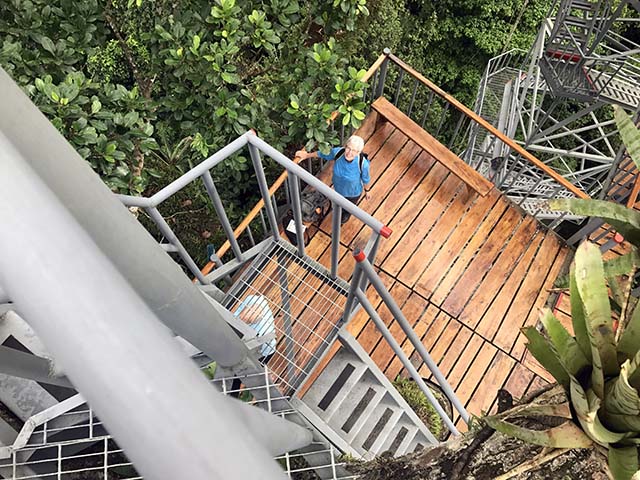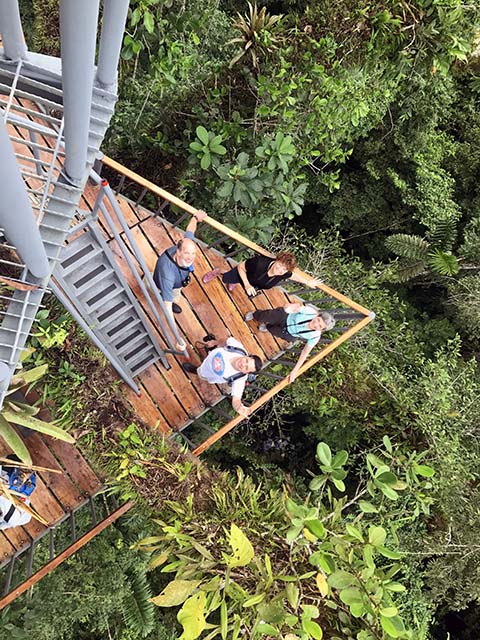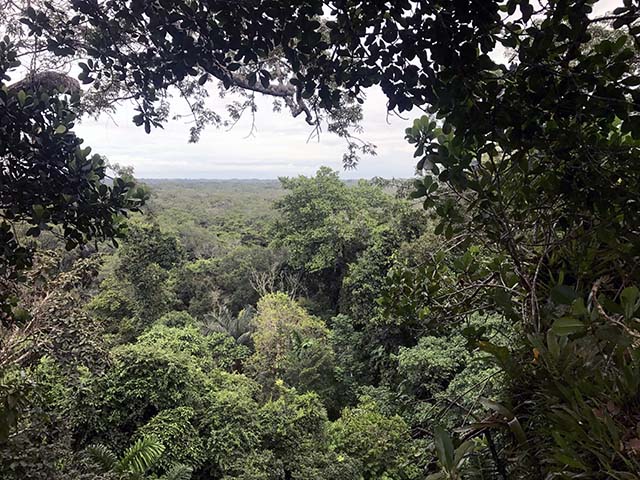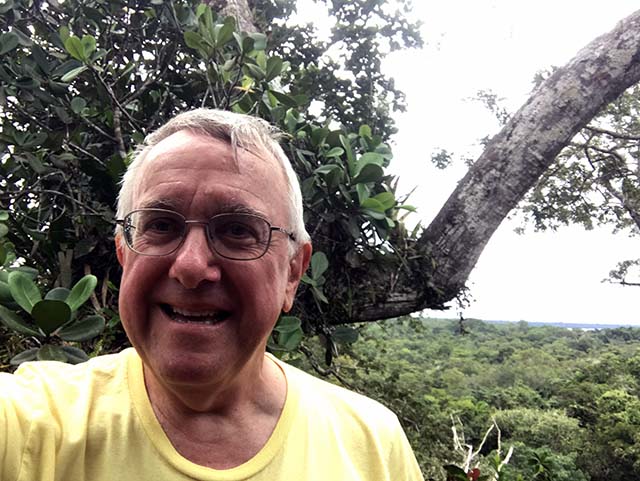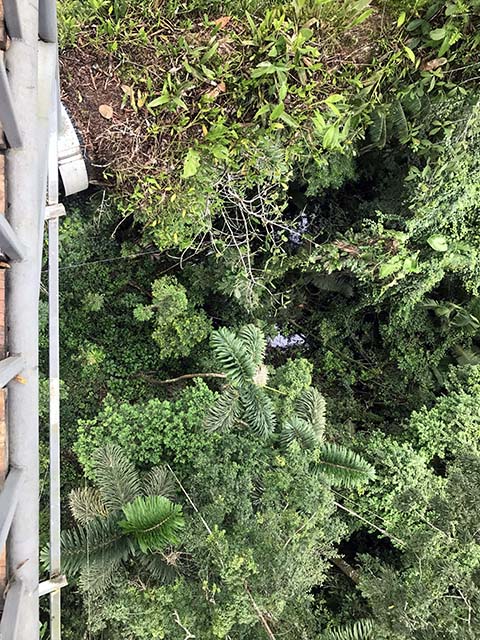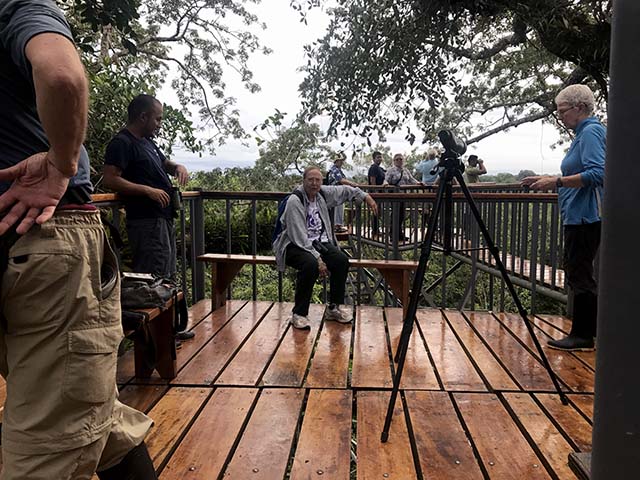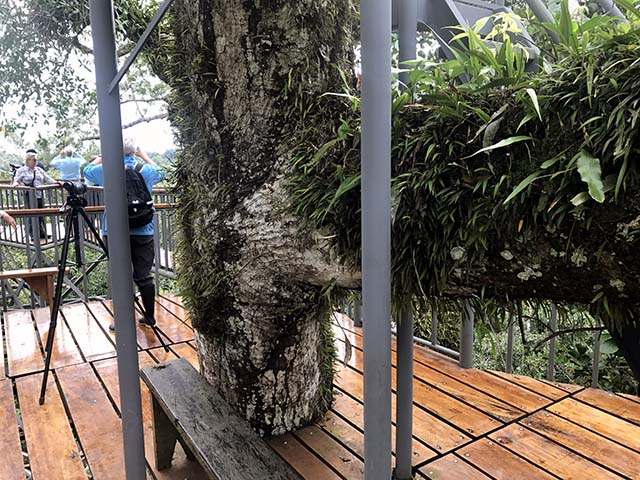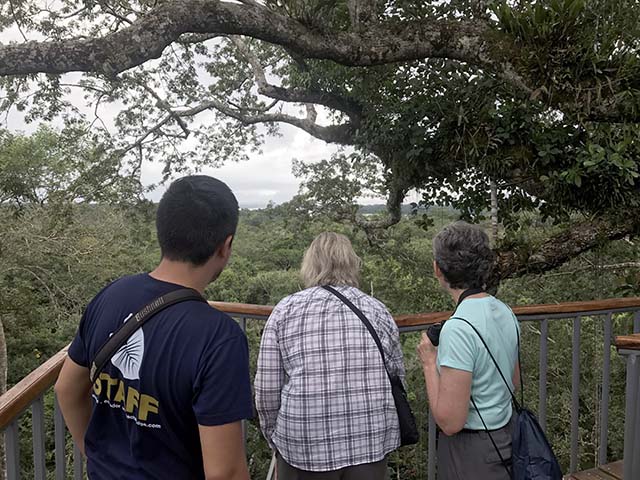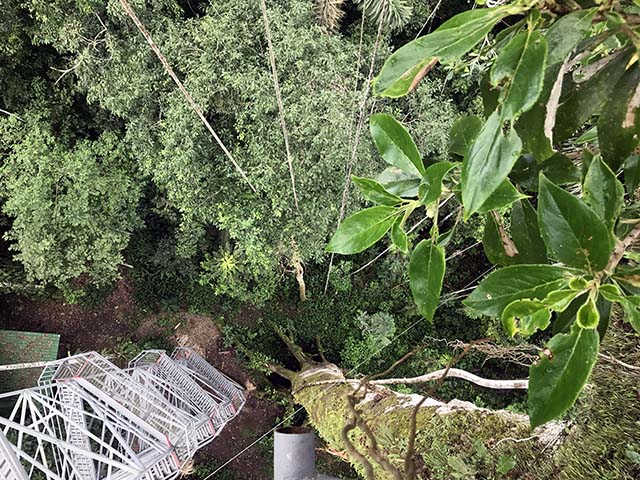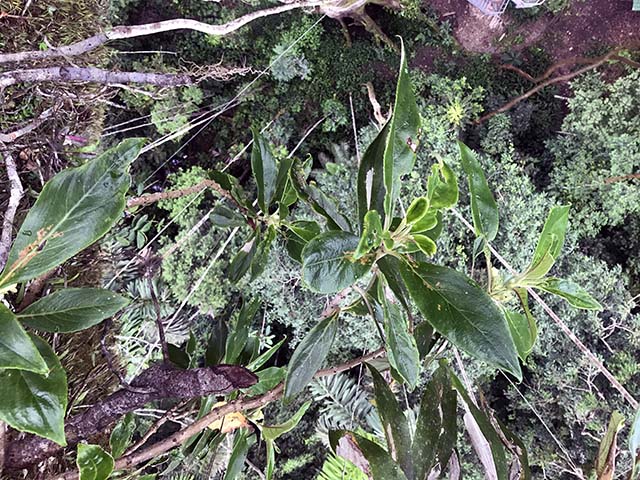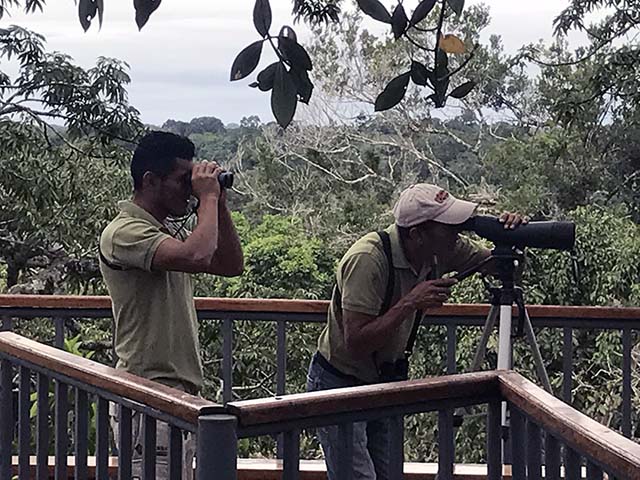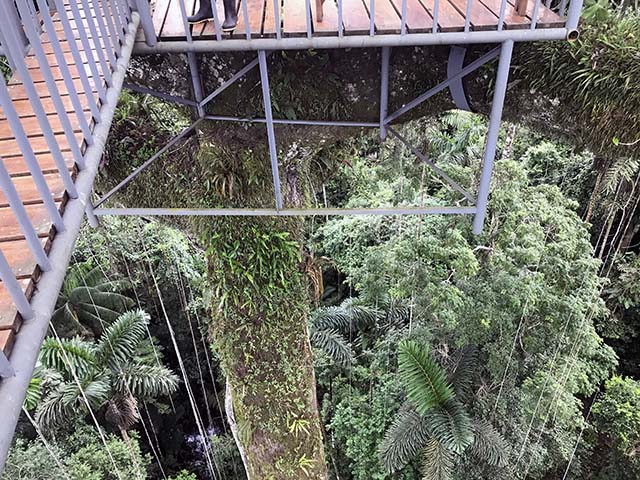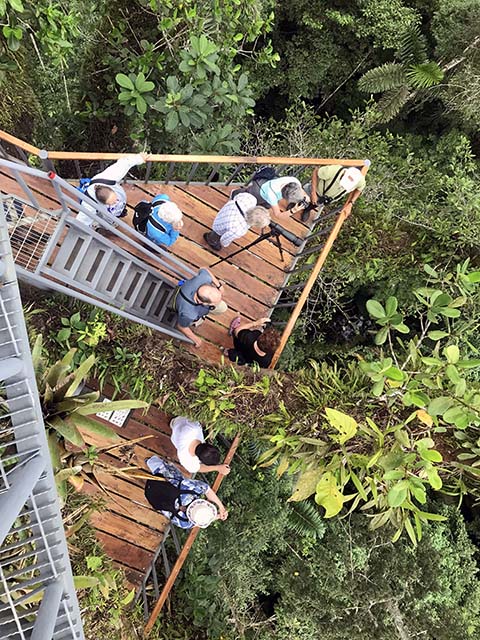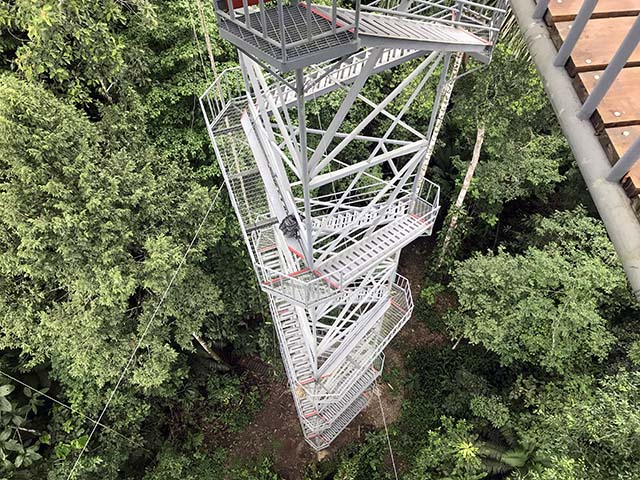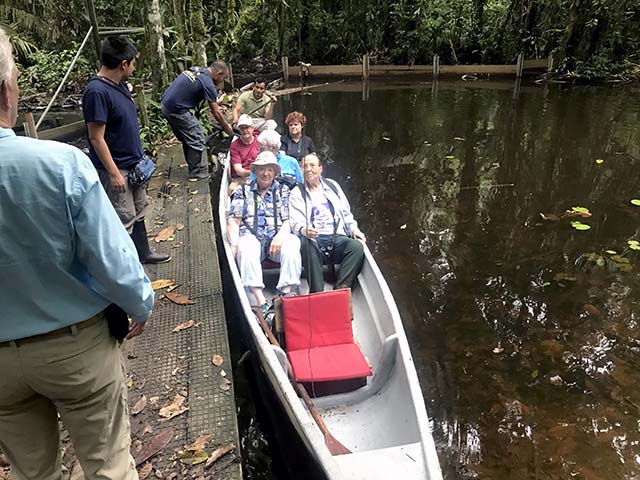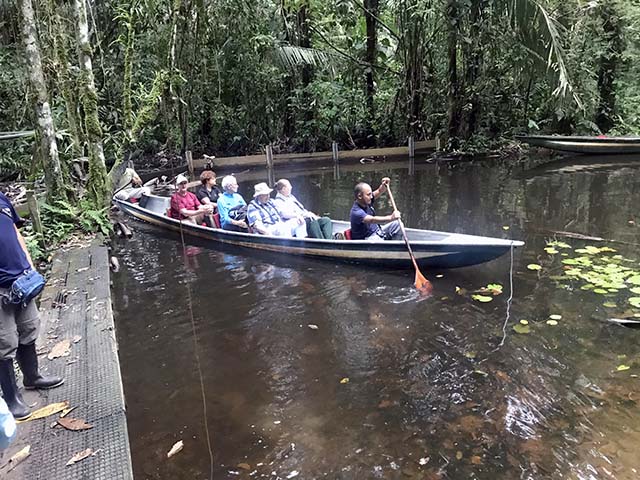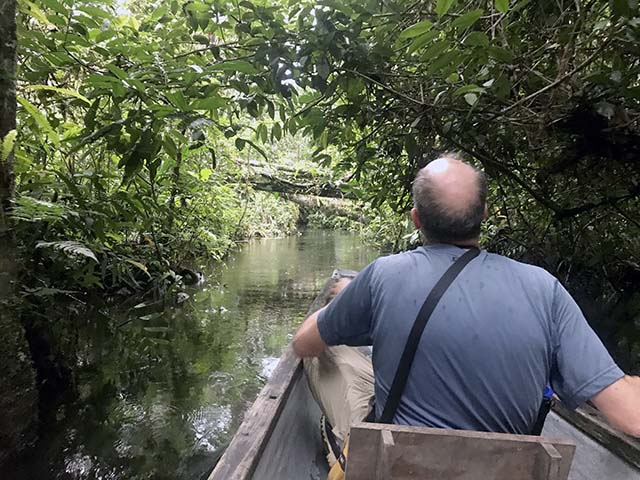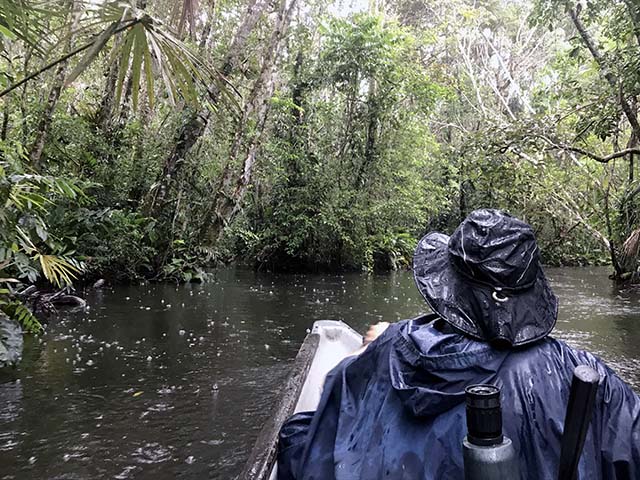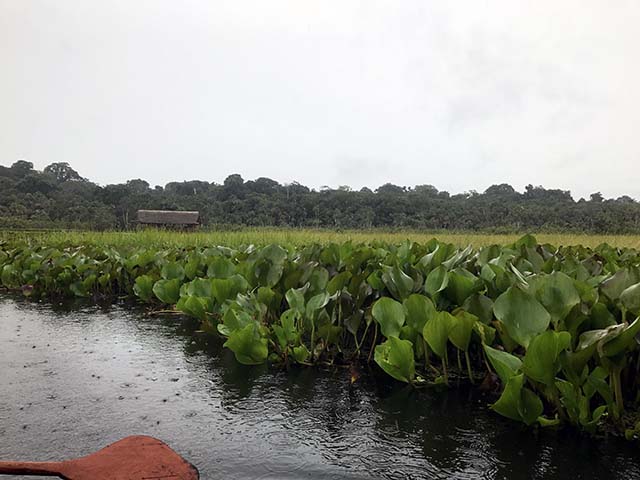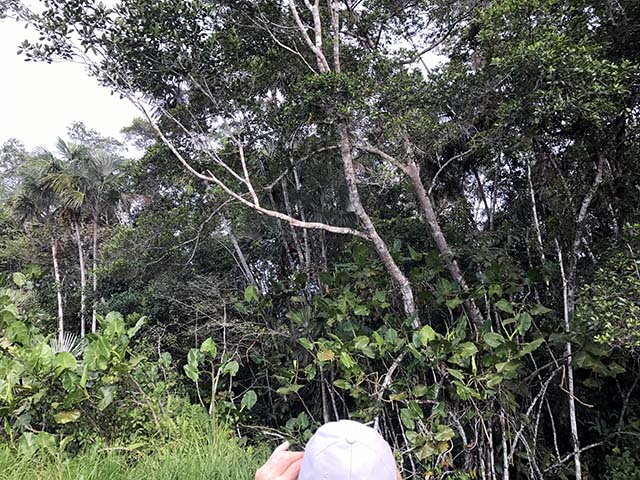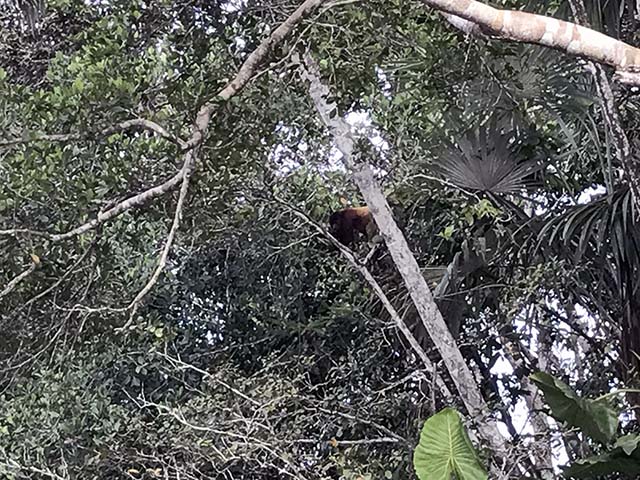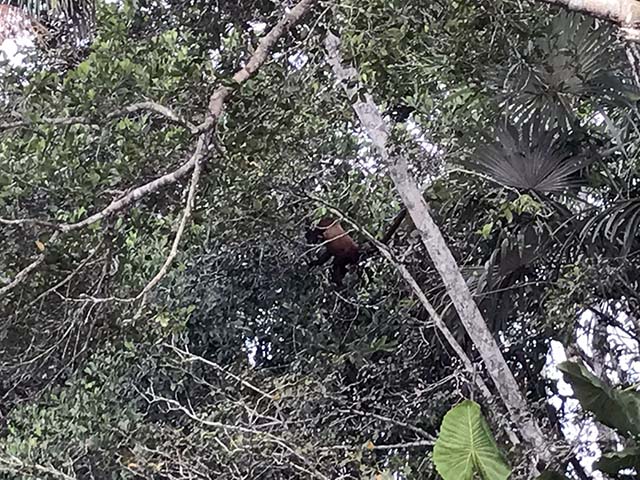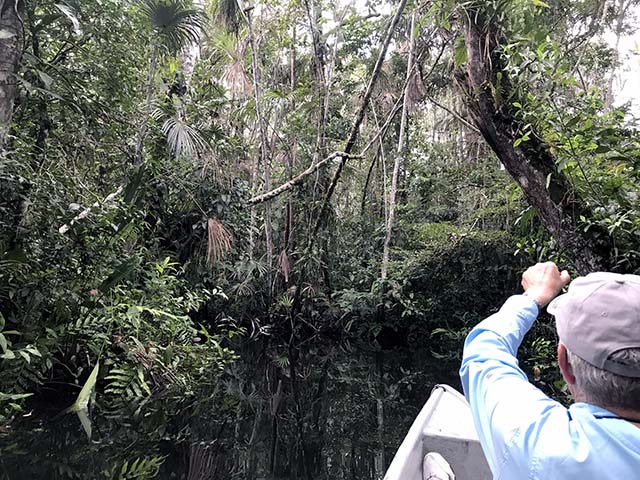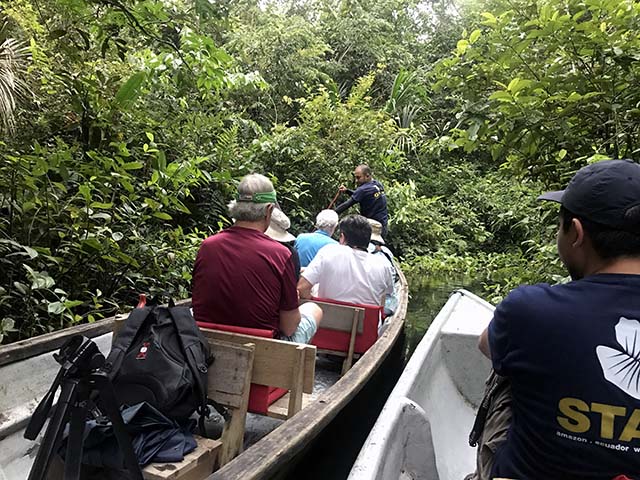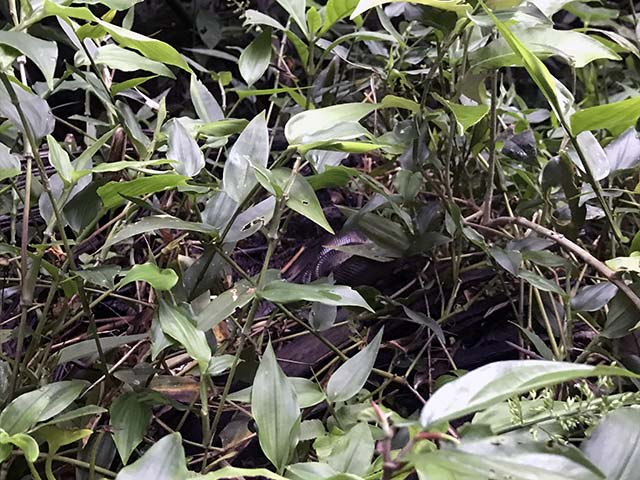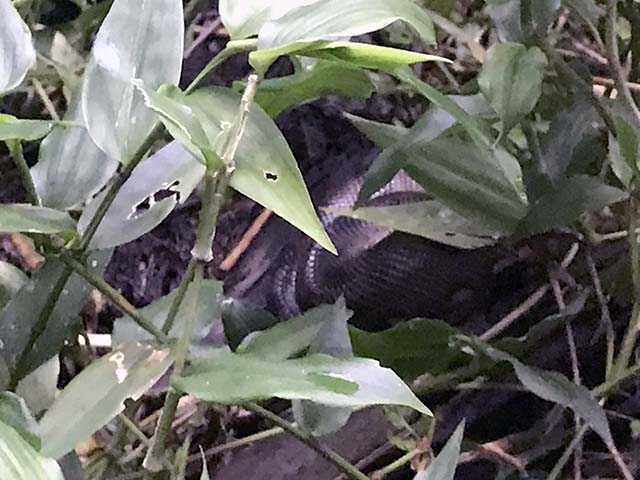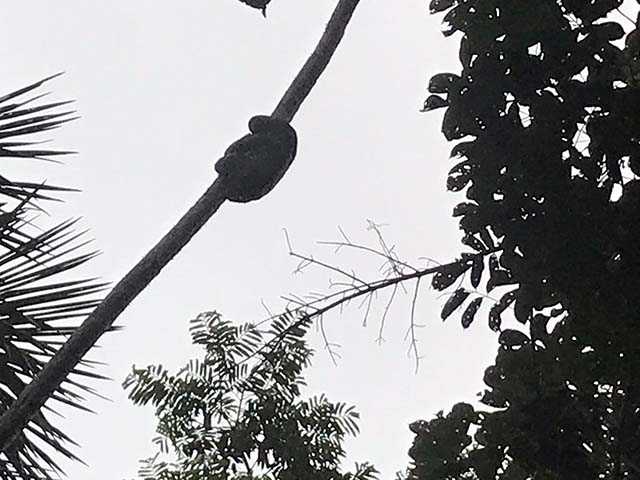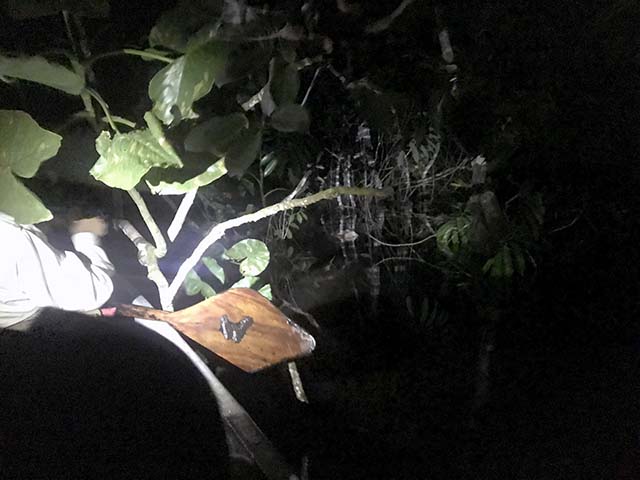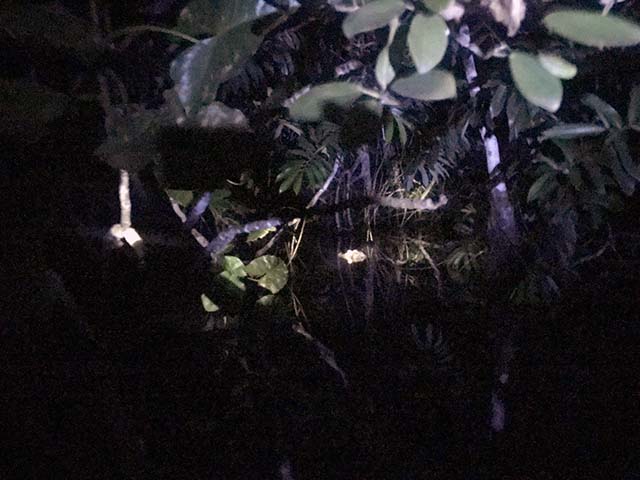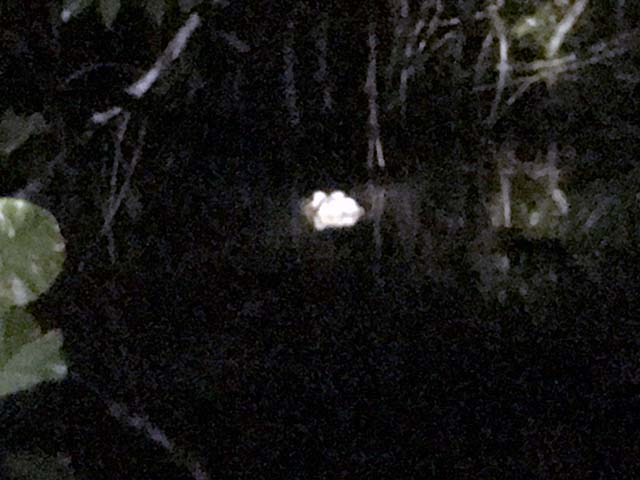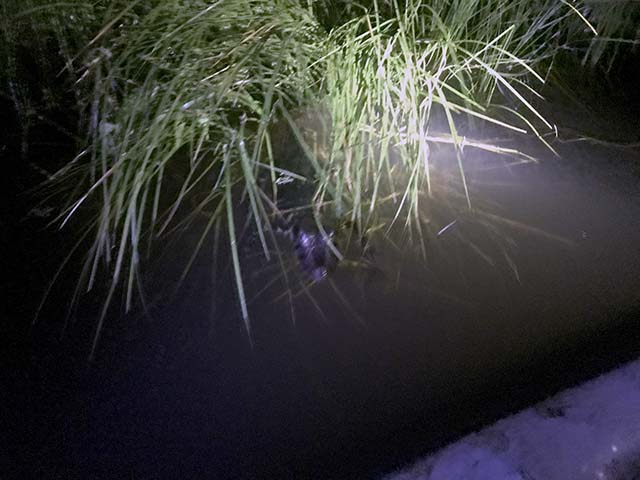|
The dawn of another day of adventure at Sacha Lodge
Bill looks refreshed, doesn't he? A good nightlong jungle lullaby of tree frogs and other critters will do that for you.
So where is our canoe taking us today?
First a little walk through the jungle.
Would you just look at the size of that kapok tree? Daniel, our nature guide, has pointed out that since the tree can't extend its roots deep into the nutrient-poor clay under the forest floor, it develops huge root buttresses to hold it upright. See them behind me? Ceiba pentandra is a tropical tree of the order Malvales and the family Malvaceae (previously separated in the family Bombacaceae), native to Mexico, Central America and the Caribbean, northern South America, and (as the variety C. pentandra var. guineensis) to tropical west Africa. A somewhat smaller variety is found throughout southern Asia and the East Indies. Kapok is the most used common name for the tree and may also refer to the cotton-like fluff obtained from its seed pods. The tree is cultivated for the seed fibre, particularly in south-east Asia, and is also known as the Java cotton, Java kapok, silk-cotton, Samauma, or ceiba. The tree grows to 230 feet (70 meters), with reports of Kapoks up to 252 feet (77 meters). Trunks can often be up to 3 m (9.8 ft) in diameter above the extensive buttresses. The very largest individuals, however, can be 19-feet (6 meters) thick or more above the buttresses. The buttress roots can be clearly seen in photographs extending 40 to 50 feet (12 to 15 meters) up the trunk of some specimens and extending out from the trunk as much as 65 feet (20 meters) and then continuing below ground to a total length of 165 feet (50 meters).
What makes this kapok tree special is that Sacha Lodge has constructed a huge observation tower surrounding and resting upon it.
And we're going to climb up there. All the way. Every single step.
Huff, puff, well, huff, the view, puff, is pretty spectacular.
The bird's eye view of the rain forest.
And we have a much nicer perch than the birds get.
Just look at all the green.
This was Mother's Day, and guess what? From up this high my iPhone actually got a signal from some distant cell tower, and I called Mother from right here. This was my view when I was wishing Mother a happy Mother's Day back in Memphis. The wonders of modern technology....
But look -- the tower keeps going up.
Look at me, Lowell! I'm up high!
Not only can I look down on the trees, I can look down on Road Scholars!
Very nice view.
Bill is loving this.
Even when he looks down.
Connie may seem pooped, but she's actually seeing plenty of new birds to add to her collection of sightings.
See how the observation deck is built around and onto the kapok tree?
Daniel helps us spot tropical birds like macaws and an oropendola. You do know what an oropendola is, don't you?
Daniel explained what those hanging vines are and now I've forgotten and Google has been no help at all. So here's a test to see if any of my fellow Road Scholars are reading this: What are those vines all about?
Kinda makes you dizzy looking down on them.
Daniel had a couple of Amazon native naturalists to help him spot tropical birds.
They spoke little or no English, so it was difficult to thank them properly for their incredible ability to locate interesting things to look at. Lots of "gracias" and "muchas gracias" seemed to do the trick.
This is actually a new platform. The old platform was also built around the tree, but it was wooden and much less stable. You can still see remnants of the wooden platform.
I think I prefer the new one.
But eventually we're going to have to go down.
Wow, seriously? We climbed all that?
We made it down safely. And now it's time for another canoe ride.
Where to now? Did somebody say lunch?
Ken really wanted to so some paddling, and so he did. At least it's a pretty day. Fine job, Ken!
OK, so tell me again -- why do they call it a rain forest?
At least Sacha Lodge always keeps a supply of ponchos handy. The rain didn't faze Ken, though.
Sacha Lodge in the rain.
Daniel told us bats liked to hang out under the dining room on the lake.
Ahh, a nice lunch and a rest and ... off we go on another excursion.
Hey, look, a howler monkey!
No, really, I'm not kidding. That's a monkey up there somewhere.
There's nothing Road Scholars like better than taking pictures of monkeys.
I wonder what else we can find? Hey look, David's paddling now. Fine job, David. Bill is delighted for you to do the work.
Wait, has Pablo spotted something? Something interesting enough to stop both canoes here?
Holy moly, it's a baby anaconda! You can see him, can't you?
He's right there, all coiled up.
Quick, snap a pic and get out of the way to give somebody else a chance. Daniel says this sighting is a rare occurrence. He's seen only four in the wild before this one.
And to top it all off, there's a sloth up there clinging to a tree. We watched and watched, but he never moved. No wonder they named him sloth.
Heading back for some R&R at the lodge.
Ahh, dinner, and ... another canoe trip? In the dark? Hunting caimans? You just glide quietly over the lake, shining a flashlight low, and suddenly two red eyes are reflecting back at us. Look! over there!
He's a shy little fellow.
But blurry iPhone pic notwithstanding, that my friends is a ferocious caiman staring back at us.
That's a little clearer, I guess. Oh well, it's time to go back to the Lodge, isn't it?
Let's have a little race!
|

